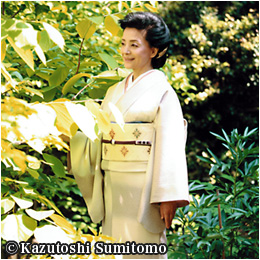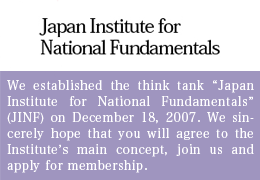INJUNCTION AGAINST RESTART OF NUCLEAR REACTORS FULL OF DECEPTION
Last week I invited two experts—one nuclear and the other legal—as guests to my “Genron TV” weekly Internet news show to review a controversial recent decision by a district court banning a planned restart of two nuclear reactors operated by Kansai Electric Co. (Kepco) at its Takahama Nuclear Power Plant in Fukui Prefecture. The guests were Tadashi Narabayashi, Professor of Reactor Engineering at Hokkaido University, and Akio Morishima, Professor Emeritus at Nagoya University Law School.
On April 14, presiding judge Hideaki Higuchi of the Fukui District Court issued an injunction prohibiting Kepco from restarting units 3 and 4 at Takahama on the grounds that the new safety standards set by the Nuclear Safety Authority (NSA) are “irrational” and “too lax to ensure the safety of nuclear power generation.” Judge Higuchi has ventured into an area of science completely outside his expertise in order to make this ruling. On top of that, the judge declared that permitting a resumption of nuclear power generation at Takahama would be an infringement of citizens’ “personal rights.”
Professor Narabayashi had this to say from a technical standpoint about this unconvincing and difficult to understand decision:
“Judge Higuchi has erroneously concluded that, even when the basis ground motion is less than 700 gal in an earthquake, there is a possibility of the plant’s external power supply being severed, the main feed water pump destroyed, and the reactor core impaired. The main feed pump refers to a pump used for power generation in pressurized water reactors, the type employed at Takahama that uses great volumes of water to turn turbines. Meanwhile, should an accident occur, another pump is used to inject water to cool the reactor.
“Called an auxiliary feed pump, this pump plays a key role in place of the main pump in an accident. I suspect the presiding judge is unaware of this fact. I am afraid he has virtually no idea how a nuclear reactor is structured.”
The judge also pointed out the “need for quake-proof emergency headquarters” at Takahama, describing as “irrational” the additional grace period the NRA has granted nuclear power stations for the undertaking of such measures.
Absence of Specific Definition of “Personal Rights”
A quick read of the text of Higuchi’s judgment may induce one to agree with him. Many of us know about the late Masao Yoshida, who as plant manager of the Fukushima #1 Nuclear Power Station operated by Tokyo Electric Co. worked heroically out of a quake-resistant operations center when the mega-quake of March 11, 2011 struck. Anyone is quite capable of realizing what a vital role such quake-resistant buildings play in an emergency, and it is only natural that one would wonder if Takahama’s two nuclear reactors can be safe for a restart in the absence of such facilities. However, the judge is mistaken in this regard as well, Prof. Narabayashi emphasizes, noting:
“The truth of the matter is that Takahama already has an emergency response center, from which it is fully capable of working out emergency measures. Also, the NRA has not set aside a grace period for construction of quake-proof buildings per se. The only grace period the regulatory body requests has to do with anti-terrorism measures. Higuchi has mixed up these two matters.”
Another mistake on the part of the judge is his mention that a reactor core will begin to be impaired in just five hours when all power is lost. This is entirely contrary to the truth, points out Prof. Narabayashi. Takahama is equipped with four 6,000-ton fresh water tanks for emergency use in addition to a 6,000-ton pure water secondary system tank. Relying on these tanks alone, notes Narabayashi, Takahama is capable of cooling the two units’ reactor cores by pumping water for 18 to 19 days straight.
Another serious mistake of facts committed by Higuchi, according to the professor, is his conclusion that Takahama has failed to meet the required earthquake-resistant strength standards for the water supply equipment attached to the spent fuel pool, which the judge ruled should have been the maximum “level S.”
Why did Judge Higuchi write such a judgment so full of misconceptions? A probable reason may be that his transfer to the Nagoya Family Court had already been settled; he may have decided to finish deliberations early in order to be able to devote himself to writing his own verdict prior to his transfer. In doing this, it is possible that he terminated deliberations without bothering to heed the opinions of experts from the Kepco side. It would not be wrong to conclude that his misinterpretation of the facts was derived from his self-righteous posture. Professor Morishima pointed out “some very strange aspects” to the judge’s decision, noting:
“Ordinarily, an injunction is aimed at avoiding infringements of personal rights caused by ‘substantial harm’ or threatened by ‘imminent danger’ while the principal case is being deliberated. And yet Judge Higuchi makes no mention whatsoever of whether or not a serious accident that can be expected at Takahama should be viewed as ‘an imminent danger.’ In rendering his decision, the judge apparently completely ignored Article 15 and Article 23, Paragraph 2 of the Civil Provisional Remedies Act which stipulate, respectively, that an injunction can be issued only when ‘pressing circumstances’ are conspicuous, or that “an imminent danger” is undeniable.”
While Higuchi writes there is “a specific danger,” he fails to specify its nature.
Not A Word about China’s Vigorous Nuclear Power Generation Plans
Although Higuchi cited “infringement of personal rights” as a reason for prohibiting the restart of Takahama reactors formally approved by the NRA last February, his failure to provide a specific definition of “personal rights” makes his decision very difficult to understand. Explains Professor Morishima:
“When Mr. Higuchi ruled against the restart of units 3 and 4 of Kepco’s Oi nuclear plant, also in Fukui Prefecture, in May 2014, he resorted to the same ‘infringement of personal rights.’ He assumed a position that attached the highest value to personal rights from the constitutional point of view as well as in the eyes of civil law, claiming nothing could transcend these rights. He asserted that an injunction may be handed down when the court perceives a danger to these ‘personal rights’—even if an injunction may cause some measure of harm.”
In point of fact, “personal rights” include many things—the right to life itself, the right to protect one’s honor and privacy, and so on. In issuing the injunction, the judge cited infringement of personal rights as his primary reason without bothering to clarify which personal rights would be affected with a planned restart of nuclear power generation at Takahama.
What the judge demanded in this case was zero risk; absolutely safe operations in nuclear power generation. That, however, is humanly impossible to attain. Efforts are constantly made globally to pursue higher safety standards in science and technology. But securing absolute safety is not realistic. Prof. Morishima explained:
“If the court in its policy to cherish absolute safety will not permit a restart of a nuclear power station because it can infringe on citizens’ personal rights—that is, if it can incur the smallest degree of danger—that would be tantamount to declaring that airplanes must not be flown because they can crash, or cars should not be driven because they can cause traffic accidents. What is expected of the judiciary is to arrive at a rational common ground en route to the maximum possible safety standards rather than advancing an extreme argument. We call this ‘permissible dangers.’ It is the responsibility of the judiciary to comprehensively determine where to draw the line of permissible dangers.”
Prof. Narabayashi chimed in: “Speaking about personal rights, those who have been hardest pressed are operators and employees of medium and small-sized enterprises as well as ‘mom and pop operations.’ Because nuclear power plants are offline, night discount rates have been significantly decreased, the burden of power rates having increased by more than 30% since March 11, 2011. It is none other than the personal rights of these people that have been violated.”
Strangely, anti-nuclear power forces in Japan have not said a word about China’s aggressive pursuit of nuclear power generation. Beijing apparently has plans to build more than 100 nuclear power stations within the foreseeable future. It is indeed strange that we have heard nothing from the anti-nuclear camp about this.
(Translated from “Renaissance Japan” column no. 654 in the May 7-14 combined issue of The Weekly Shincho)








